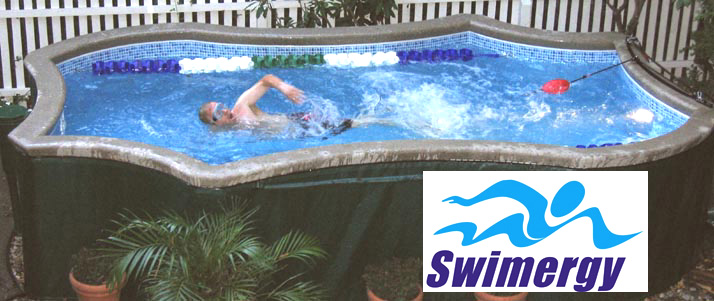
Operation:
Start-up
- Fill the pool, make sure water has flooded the pipes leading to the pump, and turn on the pump. Leave the solar system, if any, out of the loop. There should be an immediate rush of air and water out of the return, settling down to a strong stream. If not, troubleshoot. Assuming all is well, note down the system resistance as indicated by the pressure gauge at the top of the filter. It may be low, maybe as low as 1or 2 psi, due to the low-restriction piping and return. Note down this pressure, it is your baseline pressure. When, under identical conditions, you see that the pressure has risen 5 psi above the baseline, it is time to clean the filter.
- Apply the included chemicals to the water, and stir until dissolved. Now engage the solar system. Make sure that you still have adequate flow at the pool. Run the pump as necessary until the water is clean and warm. You can now use your pool.
Purification
Daily water testing
- You would be wise to check, at least initially, the pH factor and the free chorine residual of the water on a daily basis. If you have a salt system the salt cell will chlorinate the water automatically, but it has no way of "knowing" whether it is making too much or too little. Thus you will have to calibrate the system yourself based on your results.
- Chlorine demand will vary with temperature, sunlight, number of swimmers, rainfall, and other factors. Thus the adjustment appropriate for early May will not do in early July, and viceversa. Low chlorine levels leave you exposed to contracting the infectious diseases of other swimmers -- or transmitting yours to them -- and to the unchecked growth of algae in the pool. Insufficient chlorination may also lead to the formation of unhealthy and malodorous chlorine compounds known as chloramines. High chlorine levels will age the liner and equipment prematurely and may be uncomfortable. The ideal level of free chlorine in the water is 1.5 parts per million (ppm), and the ideal pH factor is between 7.2 and 7.4. At these levels chlorine is both effective and imperceptible.
WINTERIZATION
- First, remove the solar cover, dry and put away. Clean the filter and check the salt cell for debris or corrosion. Run the pump and apply the proper dose of algaecide for black algae to the water, but do not apply any additional chlorine or shock! It is not needed and will deface and destroy the liner in no time. Check the chemistry and adjust as needed. Now turn off ALL power to the pool. Close the skimmer opening. Plug the return and the skimmer relief opening. Evacuate the water from all pipes, skimmer, solar collectors, valves, pump and filter, and salt cell. Use pool antifreeze and an ice compensator in the skimmer. Stretch a cover tight over the pool, anchor it down firmly, and place an automatic de-watering pump in the center, draining to the ground. Cover your equipment to protect it from heavy snows.
SPRING OPENING
- Remove the covers, remove the plugs, top off the water level as needed, turn the system circuit breakers back on, leave the solar system out of the loop and start up the pump, making sure that there is flow. Check for leaks, fix as needed. Send water to the solar system, check for leaks, fix as needed. Replace the solar cover. Run the system until the water reaches a comfortable operating temperature, one week or so in most locations.
REPAIRS
- As there are no complicated systems, a local pool professional should be able to help with most repairs. Careful pool maintenance will considerably extend the life of your equipment.
- First, remove the solar cover, dry and put away. Clean the filter and check the salt cell for debris or corrosion. Run the pump and apply the proper dose of algaecide for black algae to the water, but do not apply any additional chlorine or shock! It is not needed and will deface and destroy the liner in no time. Check the chemistry and adjust as needed. Now turn off ALL power to the pool. Close the skimmer opening. Plug the return and the skimmer relief opening. Evacuate the water from all pipes, skimmer, solar collectors, valves, pump and filter, and salt cell. Use pool antifreeze and an ice compensator in the skimmer. Stretch a cover tight over the pool, anchor it down firmly, and place an automatic de-watering pump in the center, draining to the ground. Cover your equipment to protect it from heavy snows.
![]()
Copyright © 2010 SwimergyTM Swim Systems - All Rights Reserved